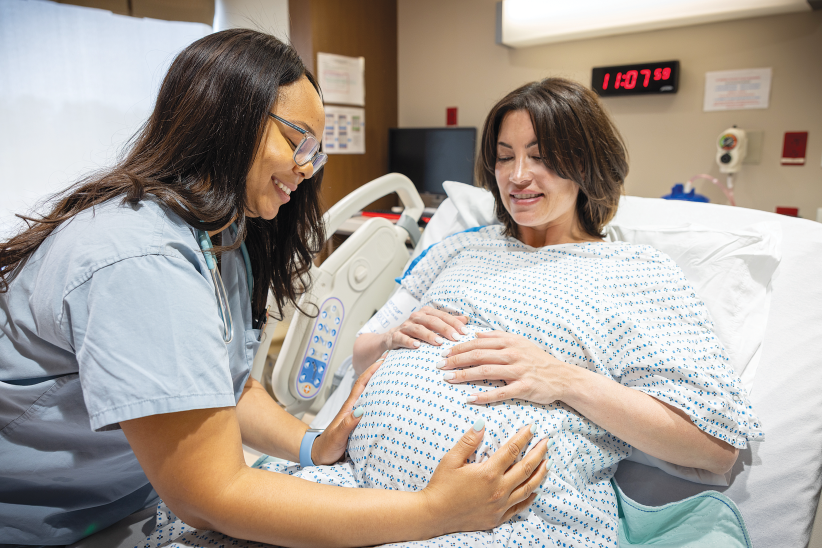Approximately 1 in 10,000 newborns are born with congenital scoliosis, an abnormal side-to-side curvature of the spine caused when the vertebrae do not form properly. While less common than the type of scoliosis that occurs during adolescence, congenital scoliosis can be much more severe, according to Lawrence Lenke, M.D., Surgeon-in-Chief of The Spine Hospital at the NewYork-Presbyterian and Chief of Spinal Deformity Surgery.
Detection
The deformities associated with congenital scoliosis begin in the womb; however, it may not be detected until much later. “Sometimes the congenital abnormalities can be seen in utero or at birth,” Lenke says. “Typically, it’s picked up either by the parents or a pediatrician. However, people can have congenital scoliosis and not know about it until they have an X-ray of their spine for reasons not related to scoliosis.”
If parents are concerned that their child may have congenital scoliosis, Lenke suggests that they look for “shoulders that are not level, shoulder blades that look asymmetric, a trunk that looks a little bit asymmetric, abnormal creases in the waistline or trunk area, or a hump on the back when the child bends forward at the waist.”
Effects
The effects of congenital scoliosis on a child can vary widely. As Lenke explains, “some congenital deformities produce a fairly normal spinal column with minimal to no deformity or problems, while some patients have the most severe deformities that we see.”
Congenital scoliosis doesn’t only affect the spine, however. “We always have to do extra screening and make sure a patient’s heart, kidneys and other organs are normal, both anatomically and functionally,” says Lenke. “There’s also a higher incidence of neurologic abnormalities. If the spinal column is malformed, the spinal cord and nerves may also have abnormalities.”
Treatment
For children whose scoliosis is severe and/ or worsening, surgery may be the best option. According to Lenke, there are a lot of factors to weigh, including the type and magnitude of the congenital deformity, where it is located in the spinal column, and the progression rate.
Lenke explains that the choice of treatment for congenital scoliosis is not always clear-cut. “Congenital scoliosis can be controversial in its treatment,” Lenke says. “The spectrum of treatments available is quite varied, and the indication for surgery is variable. It probably is worth getting a second opinion for any type of surgical treatment.”
One type of surgery used to correct severe spinal deformities is vertebral column resection (VCR). “VCR is almost like a salvage procedure for those who are progressing to a point where more traditional procedures aren’t going to work or be safe,” says Lenke. “It’s a rarely needed procedure, but when it’s needed it’s a big benefit to those patients.”
One of those patients is Kayleigh a young girl who was diagnosed with congenital scoliosis at birth. At 2 years old, Kayleigh had rods placed in her spine to help it grow straighter. She would go on to have an additional eight surgeries, but her spine continued to grow crooked and began to fuse in a deformed position, affecting her posture and breathing.
Lenke performed a VCR on Kayleigh to release the fused sections of her spinal column and position it in a new, straighter alignment. In VCR, one or more vertebrae are removed. The spinal column is then shortened and brought together into a straighter position with the use of hooks, screws and rods. “By resecting one or more vertebrae at the very center of the curve,” Lenke explains, “the spinal deformity can be corrected quite dramatically with acceptable risk to the spinal cord.”
The Outcome
Kayleigh’s surgery was a success. She was sitting up the day after surgery and walking the next day. Lenke says that this is typical, and patients usually leave the hospital within five to seven days.
Lenke recommends that parents considering VCR for their child research their options and talk to more than one specialist. “It’s probably worth getting another opinion even if you trust the surgeon because these are really complicated and risky surgeries. It is definitely one of the most complex types of spinal surgery that we perform.”
For more information about pediatric spinal surgery at NewYork-Presbyterian Morgan Stanley Children’s Hospital, parents can visit nyp.org/morganstanley or call 212- 305-4565.
Jennifer Cable is a freelance medical and science writer based in New York City.














